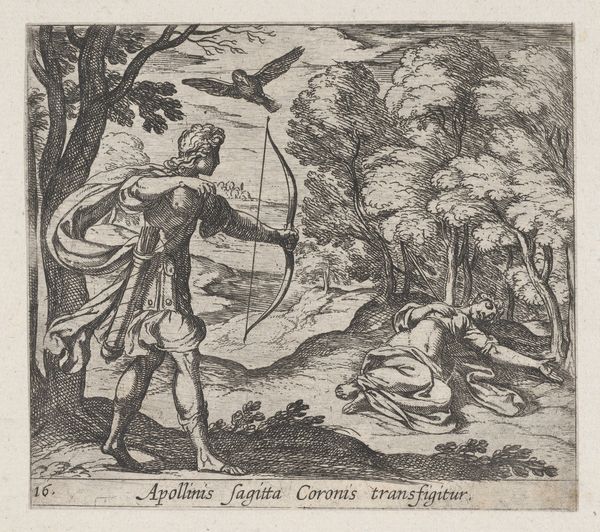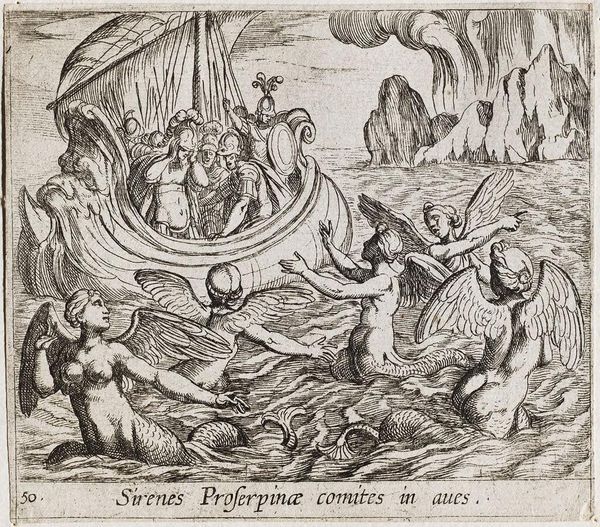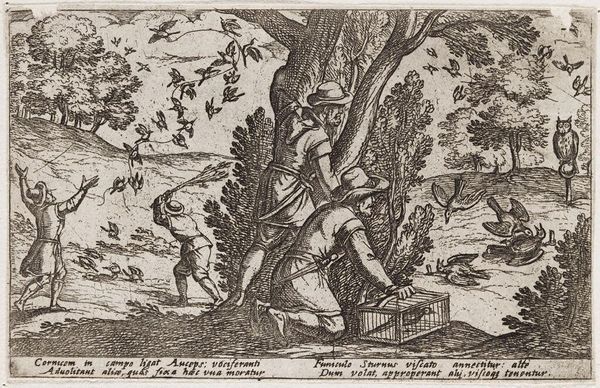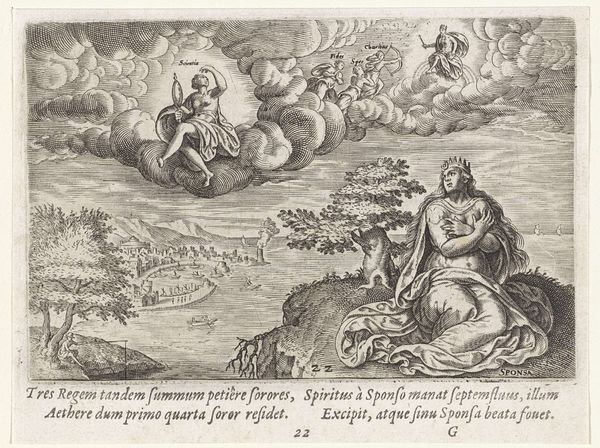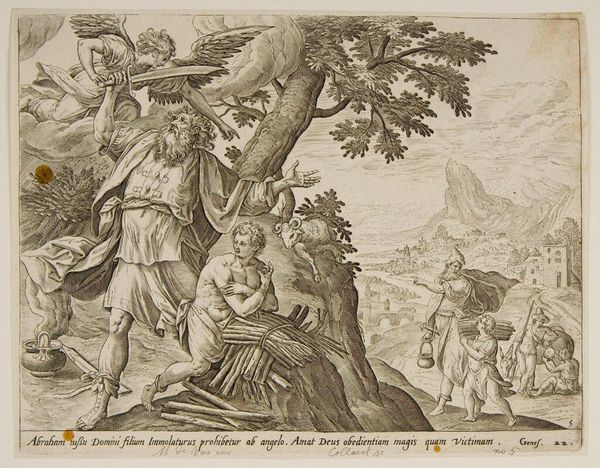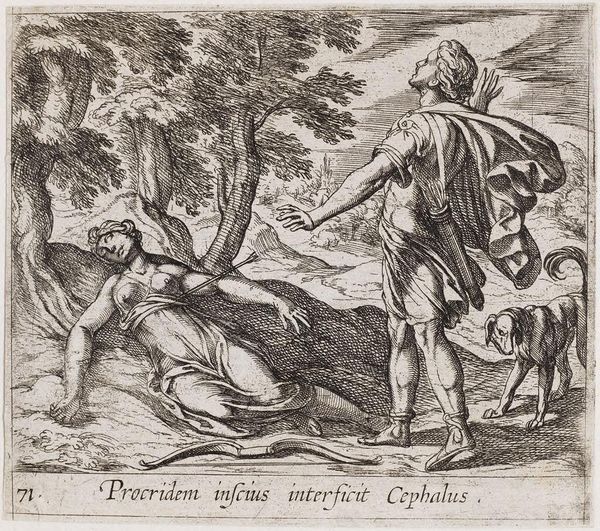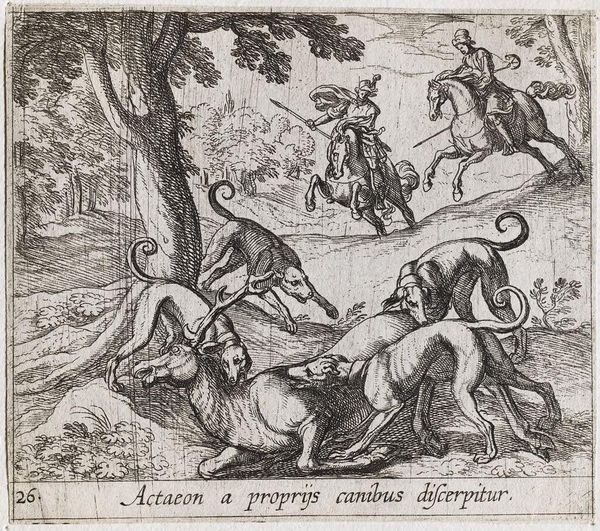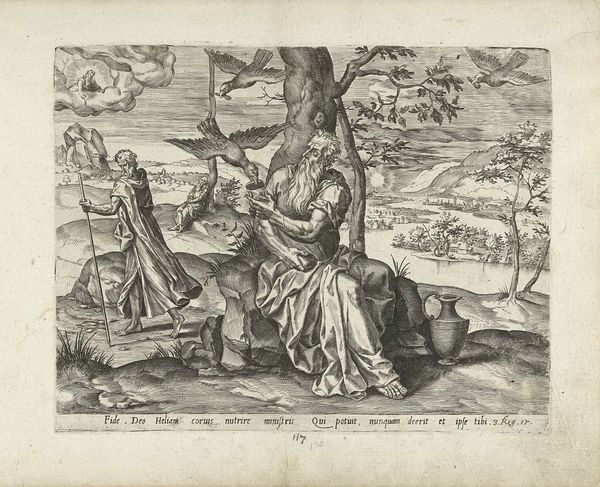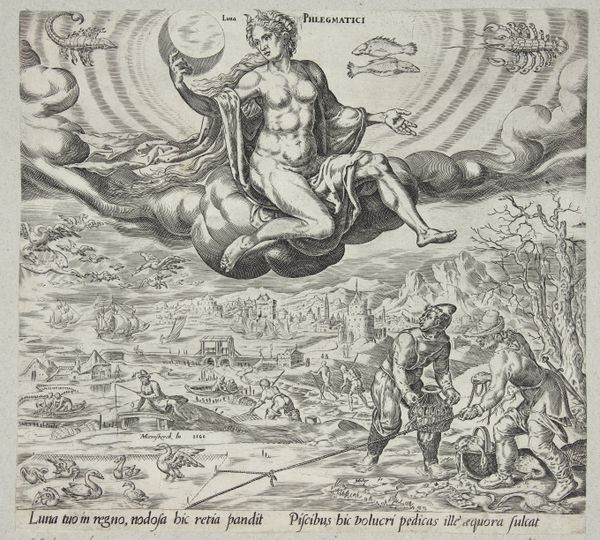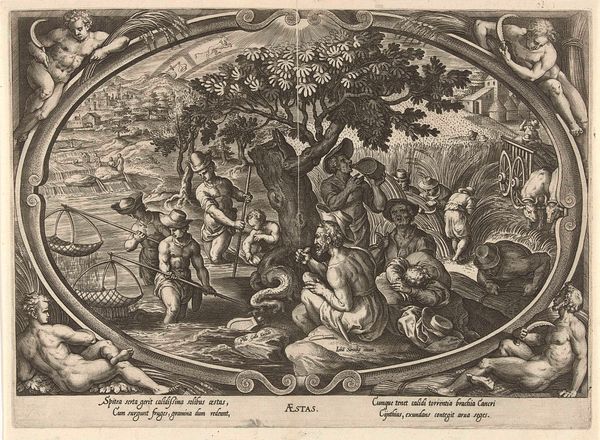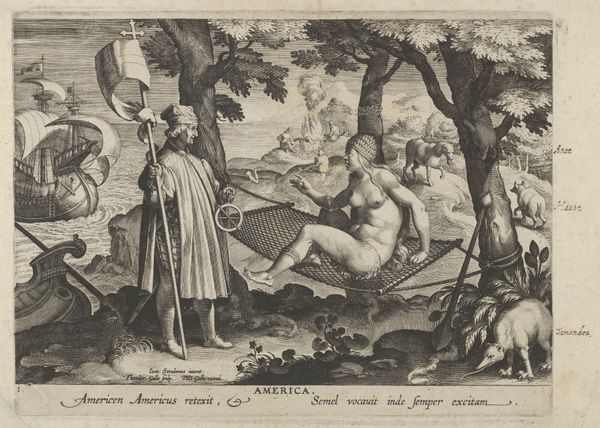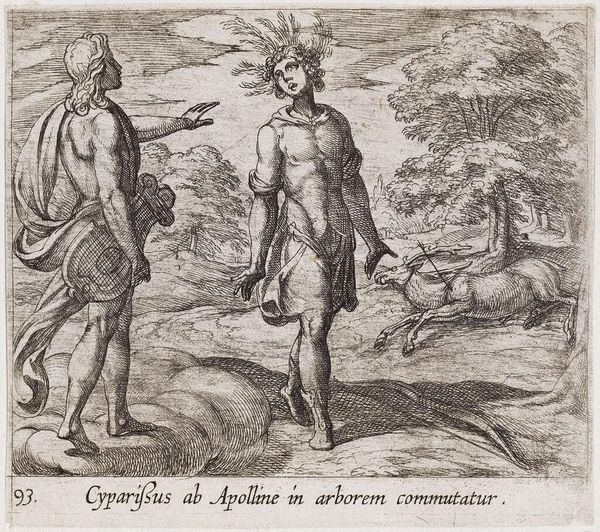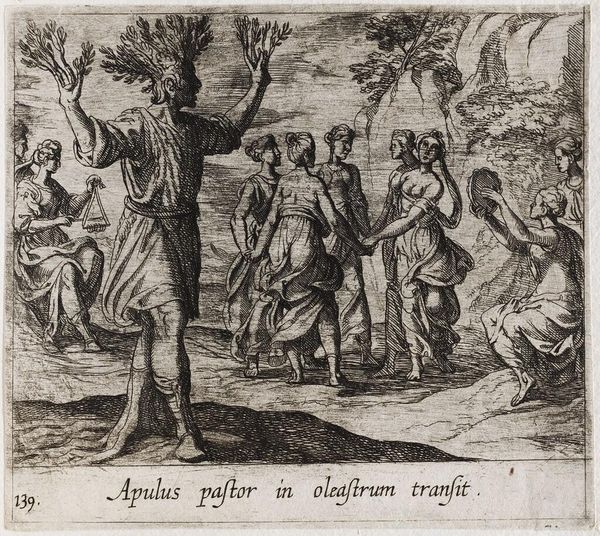
Dimensions: 10.5 x 12 cm (4 1/8 x 4 3/4 in.)
Copyright: CC0 1.0
Curator: This is Antonio Tempesta's "Apollo Killing Coronis," a striking etching from the late 16th or early 17th century, now residing in the Harvard Art Museums. Editor: The density of the cross-hatching is really remarkable. You can almost feel the tension in Apollo's stance and the stillness of Coronis’s final pose. Curator: It's a scene lifted straight from Ovid, displaying Apollo's vengeful act of slaying Coronis for her infidelity. Note the inclusion of the crow, originally white, whose feathers Apollo turned black for its failure to report the affair sooner. Editor: The means of production – the etching process itself – lends a certain harshness. The stark black lines on the white paper emphasize the violence and finality of the act. It reminds me of the labor involved in printing and the dissemination of these violent images. Curator: Absolutely, and consider how these readily available prints shaped the visual culture and moral understanding of the time. It's a potent example of how classical narratives were used to uphold social order. Editor: Right, and how materials—paper, ink, metal plate—become carriers of ideology. It makes you reflect on how the labor of the printmaker translates myth into something so brutally consumable. Curator: Indeed, a confluence of artistic skill, material reality, and the pervasive power of myth. Editor: Definitely gives you a new perspective on the relationship between making and meaning.
Comments
No comments
Be the first to comment and join the conversation on the ultimate creative platform.
